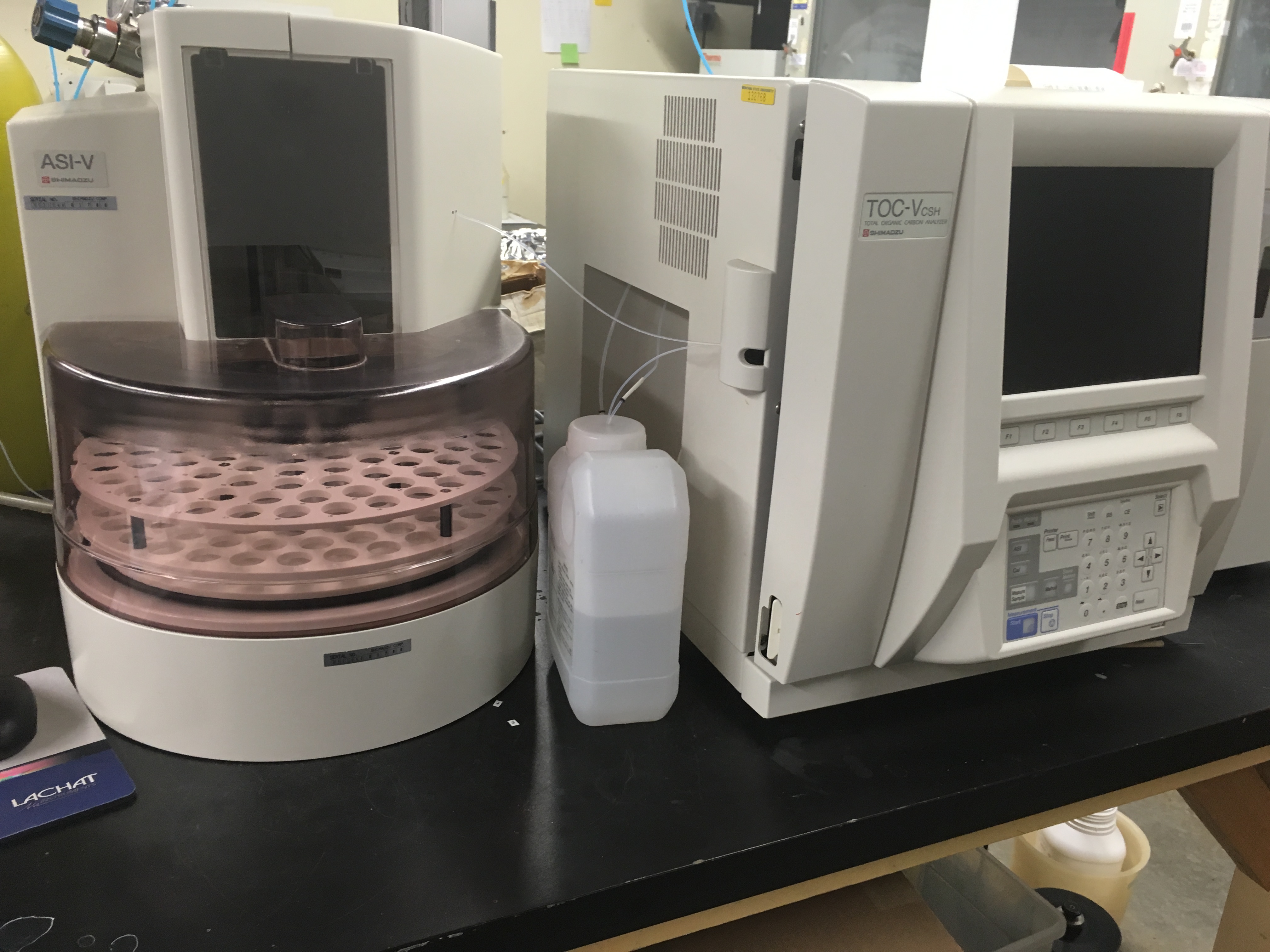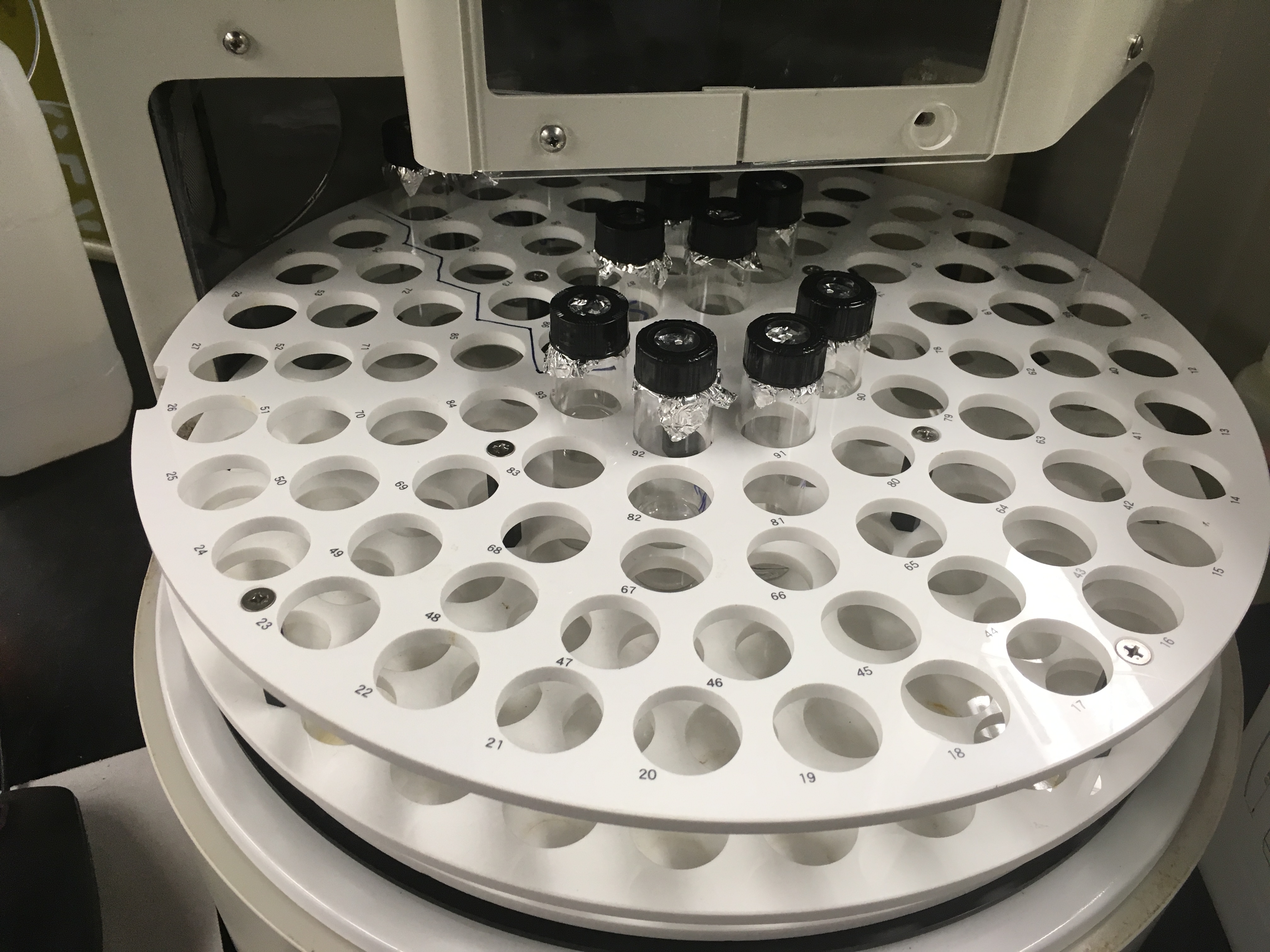Shimadzu TOC-VSH
The Shimadzu TOC-V TN is used to measure total carbon, inorganic carbon, non-purgeable organic carbon and total nitrogen in aqueous samples.
Principles of Analysis:
Total Carbon (TC): Sample is introduced into the catalyst-filled combustion tube and heated to 680 °C. The sample is decomposed (or oxidized) to create carbon dioxide. The products of combustion are cooled, dehumidified, and passed through a halogen scrubber. The CO2 is detected using a non-dispersive infrared (NDIR) detector.
Inorganic Carbon (IC): A sample is acidified with a small amount of hydrochloric acid to obtain a pH less than 3. All carbonates in the sample are converted to CO2. CO2 is volatilized by sparging air into the sample. Similar to TC analysis, the CO2 is detected using a NDIR detector.
Non-Purgeable Organic Carbon (NPOC): A sample is acidified to a pH of 3, and the sample is sparged to remove any IC. The remaining TC is measured to determine the remaining organic carbon. (Note that this result is usually called TOC, however, it is termed NPOC here to distinguish it from the TOC that is calculated by subtracting the IC from the TC. Simply put, NPOC is the non-volatile organic carbon in a sample.)
Total Nitrogen (TN): A sample is introduced into a combustion tube at 720 °C. The TN in the sample decomposes into nitrogen monoxide. The NO Is cooled, dehumidified, and passed through a chemiluminescence gas analyzer.
Measurement ranges:
TC: 0.1-3000 ppm
IC: 0.1-3000 ppm
NPOC: 0.1 -4000 ppm
TN: 0.1 - 4000 ppm
Although fully automated, the Shimadzu is a time-intensive instrument. A run of 60 samples with two carbon analyses requires ~48 hours, while three carbon analyses requires more than 60 hours.
Note: Many people will refer to NPOC as DOC.
How do I prep my samples for analysis?


